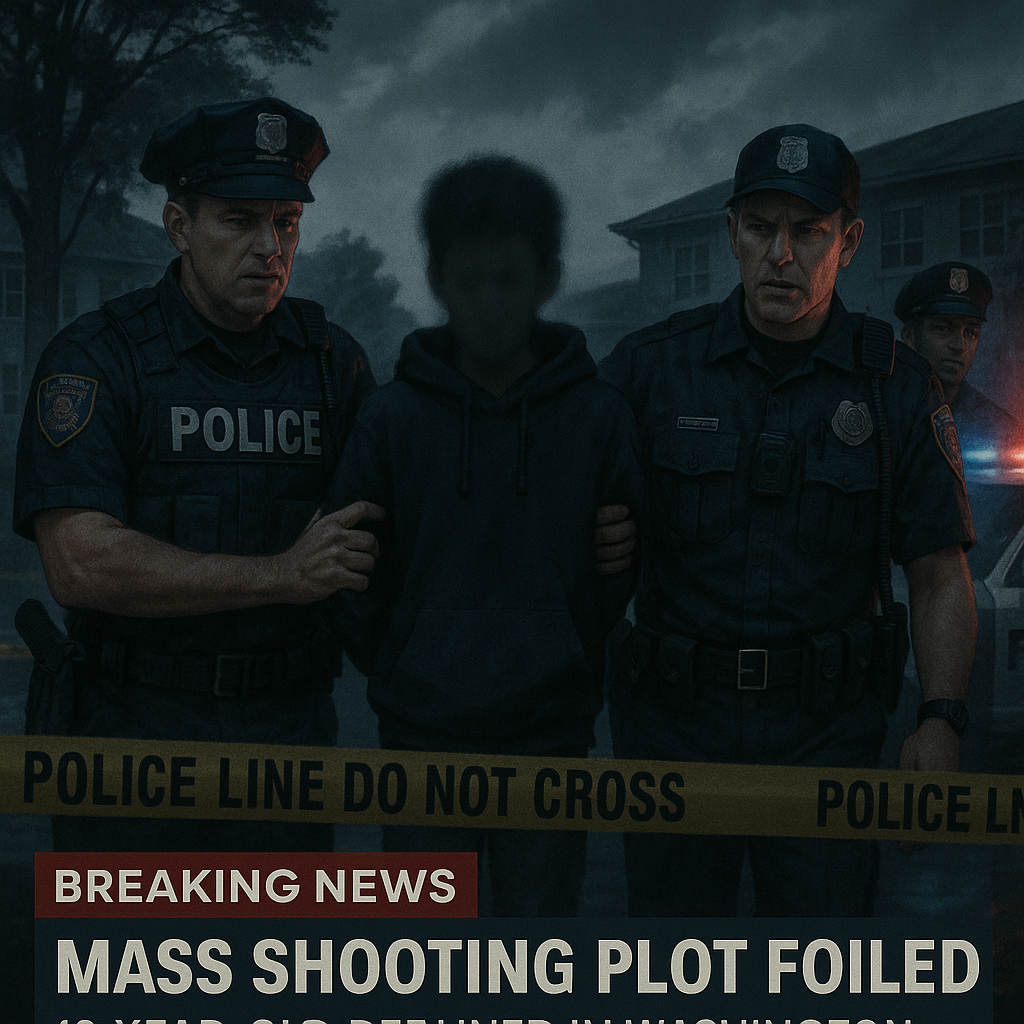When police in Washington state announced the arrest of a 13-year-old in Washington who had “everything ready to go” for a mass shooting, it sent a chilling reminder of just how close some communities can come to disaster. This isn’t a story about abstract threats or vague warnings—it’s about concrete evidence, detailed plans, and quick intervention before lives were lost.
What Happened
Authorities said they uncovered weapons, ammunition, and a written plan that detailed how the attack would unfold. The young teen had not only gathered materials but also mapped out logistics, suggesting a level of preparation far beyond idle talk. For law enforcement, this raised red flags immediately: the difference between intent and execution was shrinking fast.
The arrest highlights a harsh reality—mass violence plots are not just problems in high schools, college campuses, or workplaces. Even children as young as middle schoolers can fall into dangerous patterns that escalate quickly if not interrupted.
The Growing Trend of Youth and Violence
In recent years, researchers and school officials have documented a troubling rise in younger individuals being linked to violent threats. While the majority never follow through, the presence of actual weapons or written plans often signals that the situation can’t be brushed off.
The 13-year-old in Washington fit into this unsettling trend. Instead of idle online chatter, police found evidence that an actual mass shooting attempt was on the verge of becoming reality. That difference—between hypothetical and actionable—is what made this case particularly urgent.
How Authorities Intervened
Police acted quickly after receiving a tip, reportedly from someone close enough to the child to see warning signs. This tip led officers to investigate further, uncovering the teen’s weapons and written strategy. Officials credited community awareness and fast reporting as the reason they were able to step in before the plan turned deadly.
Community members play an essential role in prevention. Authorities have long urged parents, peers, and teachers to speak up when something feels off—whether it’s unusual behavior, alarming statements, or visible weapons. In this case, that willingness to report may have saved lives.
Why This Case Stands Out
Mass shooting attempts often involve older suspects, typically high school or college age. A 13-year-old in Washington preparing for such an act forces uncomfortable questions: How does someone so young arrive at that point? What influences—online, social, or personal—push a child toward such violent intent?
While the investigation is ongoing, psychologists and criminologists often point to a mix of isolation, exposure to extremist content online, and mental health struggles as possible drivers. But the specifics of each case differ, and it’s critical not to reduce this incident to a single explanation.
The Role of Schools and Parents
Schools across the country have invested in security upgrades, mental health programs, and awareness campaigns, but gaps remain. Parents also face the challenge of monitoring technology use, understanding peer dynamics, and recognizing red flags in behavior.
The mass shooting attempt in Washington is a stark reminder that vigilance must start early. It’s not only about checking backpacks or monitoring devices—it’s about fostering open communication where children feel heard before their frustrations spiral.
Looking Ahead
Prosecutors are weighing how to move forward with charges, and questions remain about how the justice system should handle someone so young. Should a 13-year-old face the same consequences as an adult? Should rehabilitation be prioritized over punishment? These debates will play out in courtrooms and communities, but the urgency of prevention is already clear.
As shocking as this case is, it also demonstrates that intervention works. A 13-year-old in Washington may have been ready to carry out a mass shooting, but because someone spoke up, tragedy was avoided.
Final Thoughts
Stories like this highlight a crucial balance: taking threats seriously while also addressing the deeper issues that lead children down such paths. It’s a reminder that safety isn’t just about police action—it’s about communities recognizing warning signs and stepping in before it’s too late.


